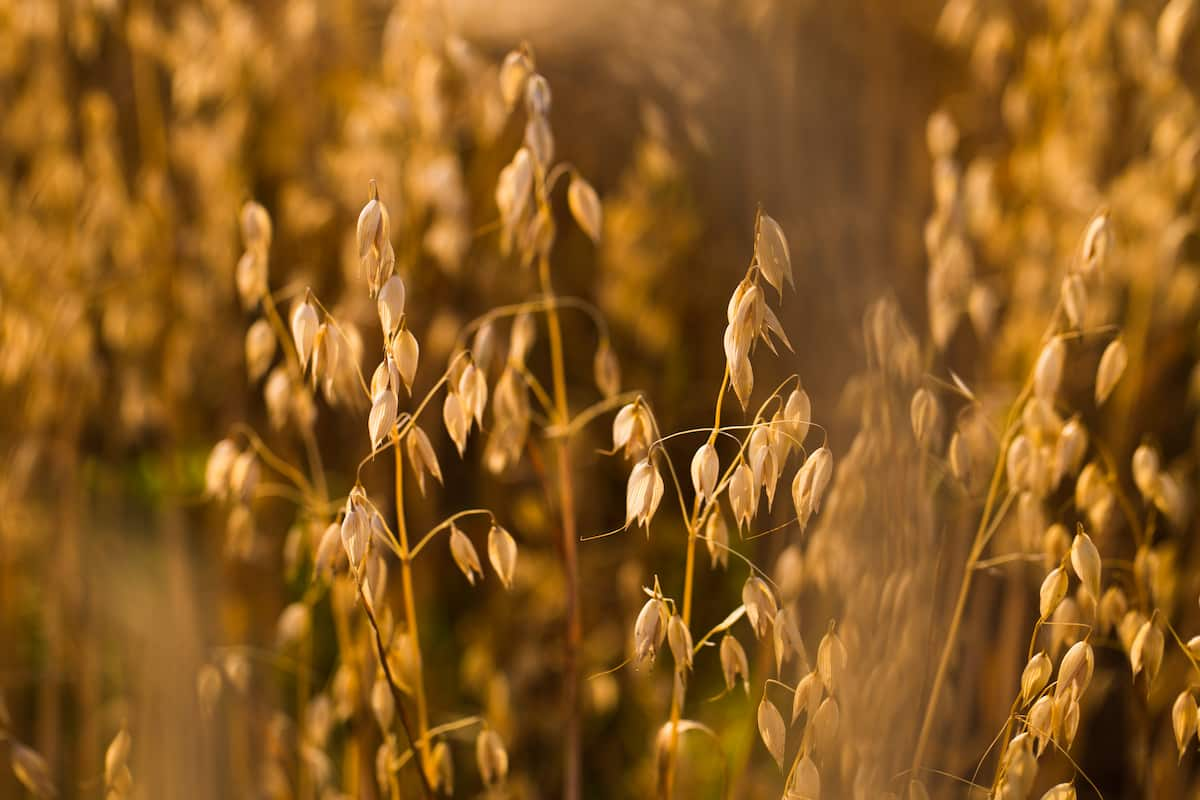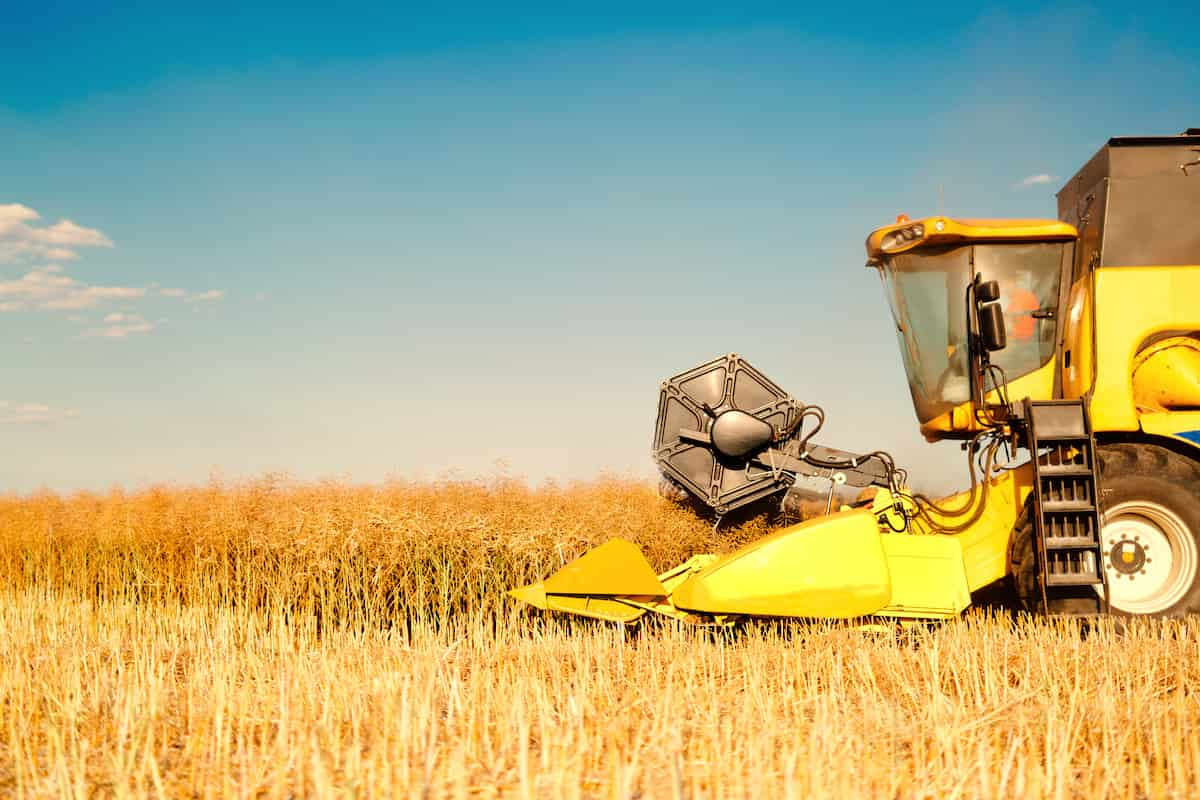Oats, scientifically known as Avena sativa, are grown for their grains, oats meal, cattle feed, and cookies and are part of the Poaceae family. With a cultivation process similar to wheat, oats have seen an increase in demand due to their high nutritional value, including carbohydrates, dietary fibers, fats, and proteins.

Oats are rich in protein and fiber but low in calories, making them a popular addition to daily diets for those concerned with their health. Derived from two wild species, oats are believed to have originated in Asia Minor and are extensively cultivated in Russia and Europe. Additionally, oats can be used for dry fodder or straw.
Oats Production Guide
Best Package and Practices of Oats High Production
For high oats production, the best practices include choosing the right variety, proper soil preparation, adequate fertilization, appropriate planting density, timely irrigation, and weed control. Packaging practices involve maintaining quality during harvesting, cleaning, grading, and storage to prevent contamination and preserve nutritional value.
Land/ Field Preparation and Soil Requirements for Oats
Field preparation for cultivating oats is similar to that of wheat. It involves using a moldboard or disc plow too deep to plow the field, then harrowing 2 to 3 times with disc or tines, and then 2 to 3 planking and leveling the field. Adding the first dose of fertilizers and farmyard manure during field preparation is recommended to enhance crop growth and development. Oats can be grown in all types of soil, but loam soil with a pH between 5 and 6.6 is ideal for its cultivation. Proper field preparation with adequate fertilization and soil conditions can produce higher oat.
Temperature, Climatic, and Rainfall Requirements for Oats
Oats thrive in cold and dry climates and are best grown in temperatures ranging from 15 to 25 degrees Celsius. They require a minimum rainfall of 80-100 mm and are ideally sowed at temperatures between 20-25°C. Harvesting is best done at temperatures between 25-30°C. Proper temperature and rainfall conditions are crucial for successful oat cultivation.
Propagation Method and Seed Quality for Oats
Oats develop from seed, which based on the variety, local climate, and intended use, can be sown in the spring or the fall. Drilled into a ready seedbed are oats that have been raised commercially. Seedbeds should be firm and clear of all foliage and weeds.
Seed Treatment for Oats
Treating seeds to prevent fungi and bacteria is essential to prevent any damage. At 3 grams per kilogram, Captan or Thiram can treat seeds.
Seed Rate and Spacing for Oats
To cultivate oats for grain, sow 80 kg of seeds per hectare, and for fodder crops, sow 100 kg of seeds per hectare. The seeds should be sowed at a depth of 3 to 4 centimeters and with 25 to 30 centimeters spacing between rows. For one Acre of land, 25 kg of seed is sufficient for successful oat cultivation.
Sowing Method for Oats
The Sowing is carried out by using the zero-tillage and Seed Drilling Methods.
Crop Rotation and Intercropping in Oats
Several cropping systems can be used with oats cultivation, including a two-year corn-soybean rotation, a three-year corn-soybean-small grain/red clover rotation, and a four-year corn-soybean-small grain/alfalfa-alfalfa rotation.
Intercropping is also common in oat cultivation, with peas often intercropped with barley or oats in the Americas, and wheat intercropped with canola or pea and broccoli intercropped with canola or pea and broccoli intercropped with peas, beans, potatoes, oats, cauliflower, or cabbage in Canada. In the USA, maize and soybeans are commonly intercropped. Brazil also uses various intercropping techniques, as in other tropical areas.
Manure & Fertilizer Applications in Oats
Applying 12.5 tonnes of farmyard manure is recommended for successful oat cultivation after the last plowing during field preparation. The recommended nitrogen, phosphorus, and potassium doses are 80:40:0 kilograms per hectare. Applying a full dose of phosphorus and 60 kilograms of nitrogen as basal is recommended before sowing the seeds. The rest of the nitrogen is applied in two split doses. The first dose should be applied at the first irrigation and the second at the second. Proper fertilization is crucial for successful oat growth and development.
In case you missed it: Proso Millet Production Guide: A Step-By-Step Cultivation Practices

Weed Management and Herbicide Application in Oats
Weed control is crucial in oat cultivation, particularly for seed production. While oat crops left for fodder require less fertility, weed control is still necessary for seed production. To control wide-leaf weeds, spraying 500 grams of 2,4-D with 600 liters of water per hectare is recommended. Proper weed control helps to ensure the healthy growth and development of oat crops, improving overall yields and quality.
Water Management in Oats
Irrigation plays a crucial role in oat cultivation, and the first irrigation should occur between 20 and 25 days following sowing. Proper drainage is also essential, and the amount of irrigation required depends on the type and temperature of the land. To achieve good output, oat crops require 3 to 4 irrigations. Moisture in the fields is necessary to form healthy seeds, and seed production declines without adequate moisture during growth. Irrigating the field after each cutting is necessary, and the tillering stage is the critical stage for irrigation to get maximum yield.
Disease Control in Oats
Oat crops are vulnerable to various diseases caused by fungi and viruses, including Anthracnose, Crown Rust, Loose Smut, and Powdery Mildew. Anthracnose is characterized by red to brown leaf lesions and bleached crowns, while Crown Rust is marked by chlorotic flecks or brown necrotic spots on leaves or stems.
Loose Smut causes the emergence of heads and dark green or black masses in place of kernels, and Powdery Mildew manifests as patches of cottony, white-gray growth on the upper surface of leaves. Barley Yellow Dwarf Virus can also cause stunted growth and yellowing of leaves, while Scab, caused by fungi, can lead to bleaching of spikelets and shriveled or discolored seeds. Management strategies include:
- Using resistant or tolerant varieties.
- Crop rotation.
- Applying appropriate fungicides or hot water treatment of seeds.
Pest Control in Oats
Aphids, including the Bird cherry-oat aphid, Russian wheat aphid, and Corn leaf aphid, can cause yellow or white striped leaves, stunted plant growth, and the secretion of honeydew, which promotes sooty mold growth. Sturdy plants can be sprayed with water, while insecticidal soaps or oils control aphids. Armyworms can consume entire leaves through 3-5 generations a year.
Organic methods, such as biological control and Bacillus thuringiensis, can control armyworms. Stinkbugs can carry pathogens and damage crops during the milk or soft dough stage. Weed management and using insecticidal soaps and kaolin clay can help control stinkbugs. Wireworm larvae can cause the death of seedlings and reduced crop stands. Chemical control must be applied pre-planting or as a seed treatment, while crop rotation and fallowing can help reduce wireworm populations.
Harvesting and Threshing of Oats
Oat crops can be harvested 75 to 85 days after sowing, giving approximately 400 quintals of green fodder when 50% of the crop is harvested. The first should be done 55 to 60 days after sowing for two harvests, with the second at 50% flowering. This yields around 550 quintals of green fodder per hectare. Harvesting should be done at the height of 4 to 5 centimeters. The crop is mature and ready for harvest after 4-5 months, typically in early April.
Oats Yield per Acre
Oats are grown to produce fodder, and an average output of 220 to 300 quintals per hectare can be obtained. If oats are grown to produce grain, an average grain yield of about 2.2 quintals per Acre (5 quintals per Hacter)of land can be obtained.
In case you missed it: Little Millets (Sama) Production Guide: A Step-By-Step Cultivation Practices

Conclusion
Oat cultivation can be profitable if proper care is taken during all stages of growth, from soil preparation to harvesting. Adequate water supply, weed, pest control, and timely harvesting ensure a successful crop. By following these practices, farmers can increase their yield and obtain good quality oats for various uses such as animal feed, human consumption, and industrial applications.
- Feed Your Flock for Less: Top 10 Tips to Save on Chicken Feed
- Ultimate Guide to Ossabaw Island Hog: Breeding, Raising, Diet, and Care
- Hatching Answers: The Top 10 Reasons Your Chickens Aren’t Laying Eggs
- Eggs and Economics: Breaking Down the Cost of Raising Backyard Chickens
- Defend Your Greens: Proven Methods to Keep Iguanas Out of Your Garden
- Ultimate Guide to Cinnamon Queen Chicken: A Comprehensive Guide for Beginners
- Ultimate Guide to California Tan Chicken: Breeding, Raising, Diet, Egg-Production and Care
- Ultimate Guide to Marsh Daisy Chicken: Breeding, Raising, Diet, and Care
- 10 Types of Chicken Farming Businesses You Can Start for Profits